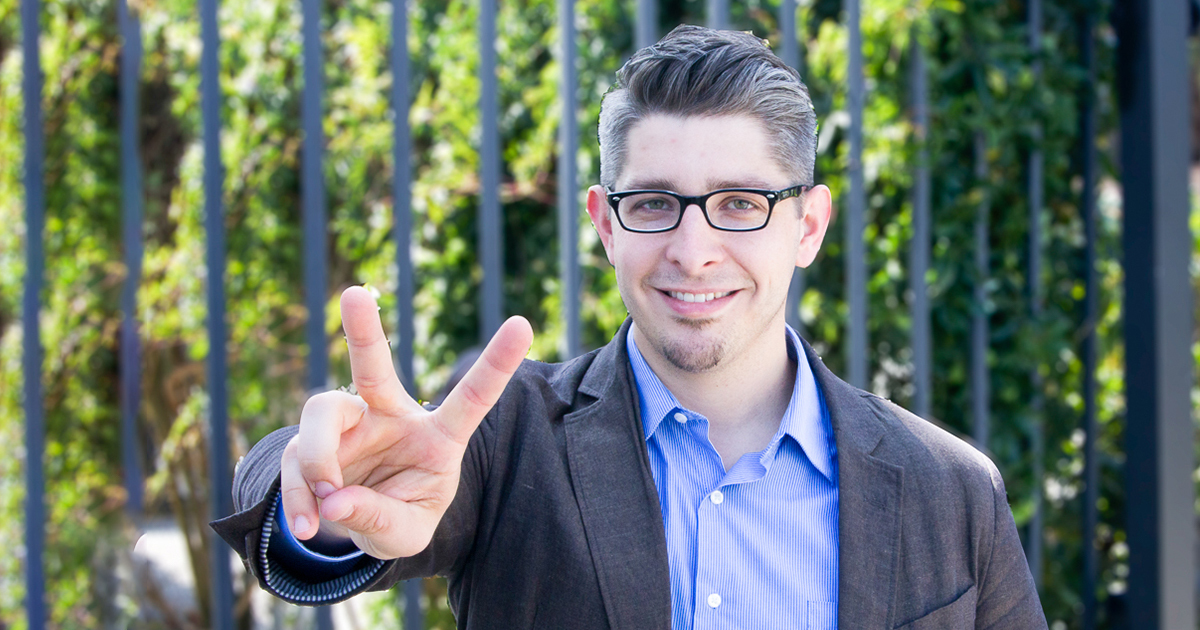Tuning Your Ears, Not Your Eyes
the Unforeseen Consequences of Modern Technology by Matthew Younglove
Date Posted: September 22, 2016

Matt Younglove is a Vandoren Artist-Clinician. The goal of the Vandoren Artist-Clinician program is to enhance the quality of the music experience in your school. This is made possible by Vandoren and a network of woodwind professionals around the country with a passion for music education and performance.
As a teacher of the saxophone, I’ve seen and heard it all when it comes to intonation. My favorite quote comes often in the context of a student quartet coaching:
“But I’m in tune with the tuner, so he/she is the one that’s wrong (pointing to the baritone saxophone player).”
This response has many problems associated with it. Like the support structure of a building (which is dictated by gravity), the bottom is always correct.
Pitch has been fluid over centuries, floating upwards as the technology has allowed for higher tensions on stringed instruments (violin and piano). Our current system in the United States, 440Hz = A, is argued and debated by the world’s best musicians. European countries often tune between 442-444Hz.
My point here is not to say that there is a correct frequency with which to tune; in fact it’s the opposite. There is NO correct pitch. Being in tune simply means that the frequencies you are producing on your instrument are at an agreeable ratio with the pitches being produced below you (which also applies to solo players – the lower notes being ones that you have previously played and are still in the listeners ear).
You must play in tune with yourself as well as with others. The human ear hears the upper of two disagreeing pitches as “out of tune.”
Tuning devices that show when a student is “in tune” can be very useful to get large numbers of players in an agreeable range. The danger comes when a student associates the green light with ‘perfection’ and anything else as ‘wrong.’
As educators, it is way more valuable to ditch the visual tuners and instead rely on drones. There are many different tuning CDs on the market as well as tuning applications on smartphones that allow for students to hear a droned pitch. Having students play along with a drone teaches them to tune with their ears, not their eyes. This is the skill necessary to play in tune when the context is a musical performance.
The danger comes when a student associates the green light with ‘perfection’ and anything else as ‘wrong.’ - Matt Younglove
Additionally, pitch is relative depending upon the key signature in which one is playing. The pitch D in the key of D is very different that the pitch D in the key of Bb.
Using drones allows a student to tune all the notes within each key signature, realizing that context dictates the pitch center.
For this reason, I make all my students use a droning device. My preference is the Boss DB-88 Dr. Beat Metronome (which is no longer on the market – the DB-90 is the new model). I plug this into a PA system in my office and make students play the associated full scale over at least 3 different notes (usually chromatically adjacent), stopping on each consonance until it is perfectly in tune.
This usually takes students quite a while at first, but the dividends are worthwhile. Playing with good intonation is the most important thing we can do as professional musicians.
Originally published to mattyounglove.com

About Matthew Younglove
Concert saxophonist and pedagogue Matthew Younglove, a South Carolina native, has performed concerts and recitals across the United States, France, and the UK. He currently serves on the faculty of Wayne State University in Detroit, MI, and is pursuing the Doctor of Musical Arts degree in Contemporary Music at Bowling Green State University, in Bowling Green, OH. Additionally, he has served on the faculties of the University of South Carolina and Edinboro University of Pennsylvannia.
Younglove is a Presser Scholar and graduated Summa Cum Laude from the University of South Carolina where he earned his Bachelor of Music degree in Saxophone Performance. He completed graduate studies at Northwestern University earning a Master of Music in Saxophone Performance. His principle teachers include Connie Akers, Frederick Hemke, Clifford Leaman, and John Sampen.